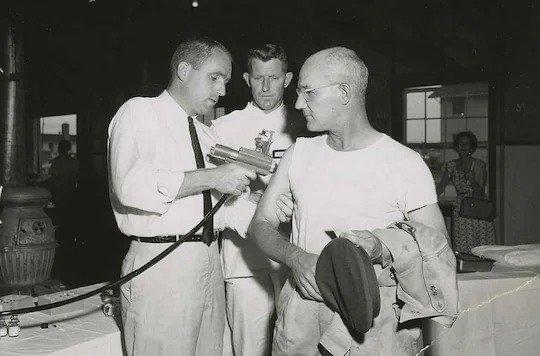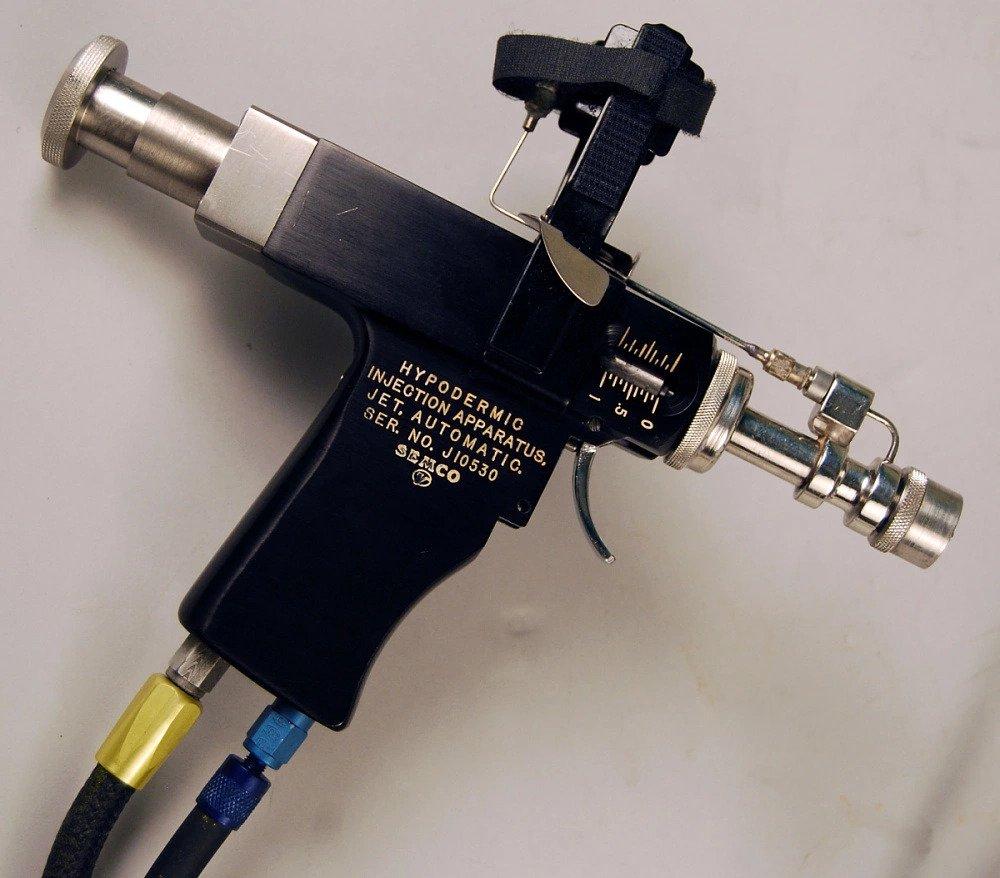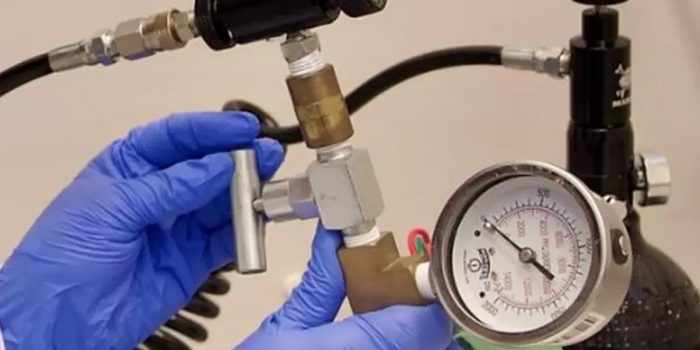Presented at the spring meeting of the American Chemical Society on Monday, the MOF-Jet offers a potential alternative to traditional needles for delivering vaccines.
Developed by scientists at the University of Texas at Dallas, this compressed gas-powered jet injection system shoots a vaccine through the skin using a small amount of pressure, which feels like being hit by a foam toy.
Jeremiah Gassensmith, the project’s principal investigator, came up with the idea during a COVID-19 pandemic lockdown. He ordered low-cost components of a compressed gas-powered jet injection system and gave them to Yalini Wijesundara, a graduate student in the lab, to work on.
Wijesundara had previously studied other jet injectors that use compressed gas to inject a narrow stream of fluid dating back to the 1960s. She believed that if the injectors could be adapted to fire solids, they could be used as a delivery system for materials within a metal-organic framework (MOF).

These porous, crystalline structures behave like molecular cages, encapsulating various materials, such as nucleic acids and proteins. By combining the jet injector with the lab’s prior work on MOFs, Wijesundara developed the MOF-Jet, which shoots powders into cells using air pressure.
“Compared to gold, it’s cheap and protects biological materials, such as nucleic acids,” explained Wijesundara. “We can also store vaccine formulations within it as powders at room temperature, which eliminates the need for the extremely cold temperatures many liquid vaccines require”.
To protect biological materials from breaking down too quickly, the team enclosed them in ZIF-8. They then modified a gene gun, commonly used in veterinary medicine, to create the MOF-Jet. By puffing a gas, the MOF-Jet fired a powdered formulation into cells with ease, just like “pointing and shooting,” according to Wijesundara.

Testing showed that the MOF-Jet successfully delivered a ZIF-8-encased gene to onion cells and a ZIF-8-encased protein to mice. The injection was less painful than being stuck with a needle, feeling like being hit by a Nerf bullet, said Gassensmith. The team also discovered that they could control the release rate of the cargo by changing the gas used.
“If you shoot it with carbon dioxide, it will release its cargo faster within cells; if you use regular air, it will take four or five days,” she explained. This means that the same drug could be released over different timescales without changing its formulation. “Once we realised that, it opened up a lot of possibilities,” said Gassensmith.
The team is utilizing their MOF-Jet method to administer chemotherapeutics and adjuvants as a prospective treatment for melanoma, which is the deadliest form of skin cancer. The team also asserts that the MOF-Jet’s ability to distribute materials over a large area could disperse cancer therapeutics more evenly in melanoma than the conventional needle delivery method.
Further research is still underway, and the team believes that the versatility of their MOF-Jet could enable numerous applications, ranging from veterinary medicine to agriculture and, potentially, even human vaccinations or therapies in the future.


